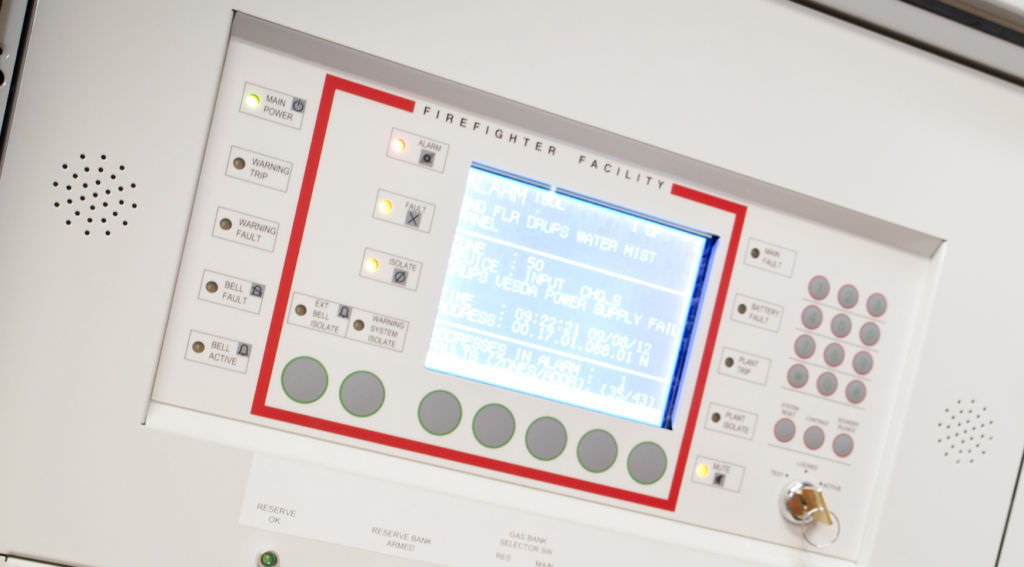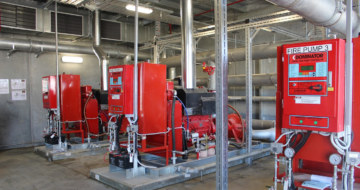
February 12, 2020 in Our Experience
Goulburn Valley Health
A state-of-the-art redevelopment of Goulburn Valley Health in Shepparton will deliver new and expanded healthcare facilities to meet the growing commu...
October 27, 2016
The Australian Standard AS 1670.1:2015 sets out the requirements for the design, installation and commissioning of fire detection and alarm systems. All new projects designed to NCC2016 must have their fire detection and alarm systems comply with the newly adopted standard.
The revision AS 1670.1:2015 brings key technical changes along with improvements to language and further detail to improve the clarity of intent. Key changes include:
Language
AS 1670.1:2015 provides improved language which is assisted by diagrams for greater design clarity. A compendium of old and new terms is provided. The most notable new acronym is FDCIE – Fire Detection Control Indicating Equipment which replaces the term Fire Indicator Panel (FIP).
Smoke Control
Section 7 of AS 1670.1:2015 now sets out the requirements for smoke detection, initiation and control of mechanical systems required to operate in fire mode. These were previously detailed within AS 1668.1:1998 and AS 4428.7:1999.
Spacing of smoke detectors have been rounded where previously tolerances were included; e.g. 7m and 10m as opposed to previous 7.2m and 10.2m. Smoke detector maximum spacing for system control has reduced to 15m between detectors (previously 20m).
Specific requirements relating to the construction and interfacing of the Fire Fan Control Panel (FFCP) are specified. For example a fault indication should be displayed on the FFCP and FDCIE. The FFCP shall implement functions included by the cause and effect matrix as part of the mechanical services design.
The importance of a coordinated approach between building services designers is acknowledged within Section 7.3 whereby it is noted, ‘it is typically necessary for designers of initiation systems for smoke control in accordance with this Standard and designers of smoke control systems in accordance with the requirements of AS/NZS 1668.1 to coordinate, such that required system operation is achieved.’
Performance solutions
Recognising the increased use of performance solutions coupled with the need to achieve speech intelligibility in areas of high ambient noise and/or hearing impaired population; the revised standard, AS 1670.1:2015 provides guidance on the use of Visual Alarm Devices (VAD) and Visual Warning Devices (VWD).
Increasingly applied as a performance solution to reduce false alarms, an Alarm Delay Facility (ADF) has been incorporated into the standard. An ADF allows a smoke detector within a residential SOU to act similar to a smoke alarm and provide local alarm for up to 5 minutes prior to escalating the alarm to the FDCIE subject to the detector being in alarm.
With the increasing use of Building Management Systems (BMS), the new standard now permits, under strict requirements, for the FDCIE to be controlled by the BMS.

Baseline data
To facilitate the service and maintenance of the system for the period of its service life, the design, installation and commissioning documentation of the system design is required to be provided to form the ‘Baseline data’. Mandatory requirements for Baseline Data have been included to match the maintenance requirements of AS1851:2012.
A greater emphasis on interface testing ‘end to end’ has led to a new commissioning section which focuses on defining the testing and reporting requirements. This includes a system commissioning statement which cross references the relevant Baseline data.
Housed in or adjacent to the FDCIE, Baseline data sets the benchmark for building compliance requirements on a yearly basis and also to assist future designers making alterations to systems within the building.
For further information, please contact us.
download pdf
February 12, 2020 in Our Experience
A state-of-the-art redevelopment of Goulburn Valley Health in Shepparton will deliver new and expanded healthcare facilities to meet the growing commu...

November 9, 2018 in News
Walker Fire Protection was recognised with both the 2018 Harry Marryatt Award for Fire Protection Company of the Year, 50+ employees and the award for...

August 7, 2018 in News
Featuring the historic Gatwick Hotel in St Kilda. Walker Fire Protection provided fire protection services for the project to Channel Nine.

April 23, 2018 in News
A.G. Coombs Advisory’s Geoff Flower will present on Building Information Modelling at the forthcoming FPA Fire Australia Conference 2018, being held...